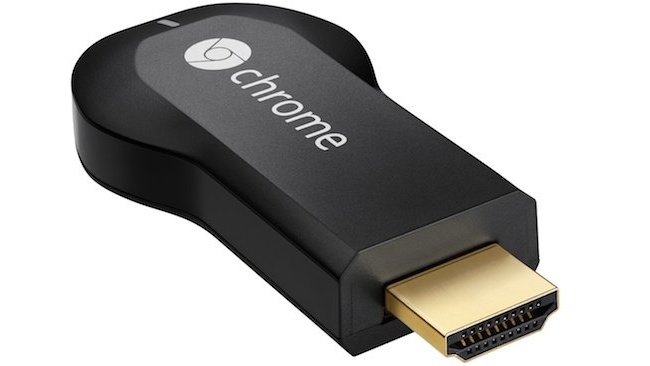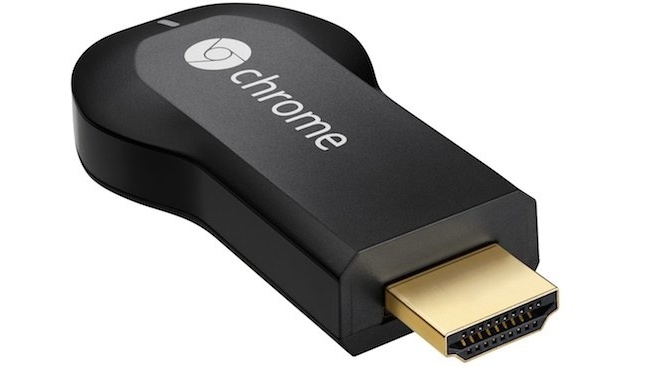
 Dongle shape, STB function
Dongle shape, STB function
A recent press release received here at Red Shark Towers set us to thinking about the future of television and of the set-top box in particular.
The press release itself was a fairly interesting one as these things go; basically Tvinci and HTTV have got together to market a joint solution that used the Tvicini platform and HTTV TV OS to allow users to ‘take over’ the set-top box with their own profiles using a companion device such as a smartphone or a tablet.
“Arguably the home's most used device for content consumption, the STB [will] finally be able to compete with the other screens in the home with a user experience on par with the companion devices,” said the release somewhat breathlessly.
The internet
“Aren't set top boxes just going to be replaced by, you know, the Internet? Or Apple TV and Chromecast? Isn't this a pointless exercise that only appears to not be so because of the large numbers of STB users out there?” said one of our number, who shall remain nameless but his initials are DS. “All most people want is an internet connection. If anything, people want to shake off their STB, which is rapidly becoming relegated to the same Ikea storage box containing their VHS recorder, SCART cables and all the other detritus that's a victim of the mobile revolution.”
This is the catchily named disintermediation argument and the answer to it seems to be both yes and no. For all its potential for obfuscation, a well-designed set-top box EPG is still seen as essential by broadcasters and viewers alike, the latter of whom are having an increasingly fraught time getting through the sheer volume of material on offer to the content they want. A clearly laid out, customisable programme guide liked to one-touch PVR functionality — another big plus point for the STB in an era where ‘always on’ internet often means ‘somewhat patchy’ internet, especially as you migrate away from the cities — remains an essential tool and one that seems to be extremely hard to pull off correctly.
Plus, of course, the STB is the physical embodiment of whatever televisual provider you happen to be hooked up to, and the psychology of locking your customers in to your services via branded CE goods is not lost on anyone.
Cord cutting
Certainly some of the newest research sees the spectre of cord-cutting, as it’s known in the industry, seemingly consigned more to the horror story category than the grim reality one. The Leichtman Research Group has found that despite the huge uptake of online video and over-the-top services, the 13 largest US multichannel video providers lost only 0.1% of subscribers in 2013. And Deloitte reckons that more than 50m households round the world will double up on their pay-TV subscriptions by the end of the year, typically maintaining one main platform based (ie satellite or cable) subscription and one SVOD (Subscription Video on Demand) that tops up content as and when they feel like it.
Against that though you have to measure the fact that pay-TV operators are increasingly looking to deliver their services through an app piggybacking on mainstream consumer electronic manufacturers’ devices, rather than face the cost and expense of building, distributing and supporting their own STB. Telia Sonera, for example, last year launched an app which takes control of a Samsung Smart TV when it detects a TS broadband connection. And the likes of Cisco and Linksys have recently disposed of their own STB divisions, which is rather telling
So is the writing truly on the wall for the STB? Well if it is going to be, Smart TV manufacturers need to address the long-standing GUI problems that plague their devices. Plus, for all their increasingly small footprint, the likes of Apple TV and Chromecast - not to mention in all likelihood the new Amazon unit due next month - essentially are STBs in that they provide a GUI and a flash-based memory for buffering (8GB and 2GB respectively).
4K
Plus there is 4K to consider. The HEVC codec that will drive 4K requires decoder chipsets and those have to be contained within something. Yes, that could be the television itself, but simple economics tends to suggest that it will be the broadcasters offering the service that will be the ones that have to bear the cost of providing it, not the CE manufacturers who are making 4K-capable sets but largely selling them to a HD audience. And that means that the branded set-stop box could be sitting under your TV for a while yet.
Tags: Technology


Comments